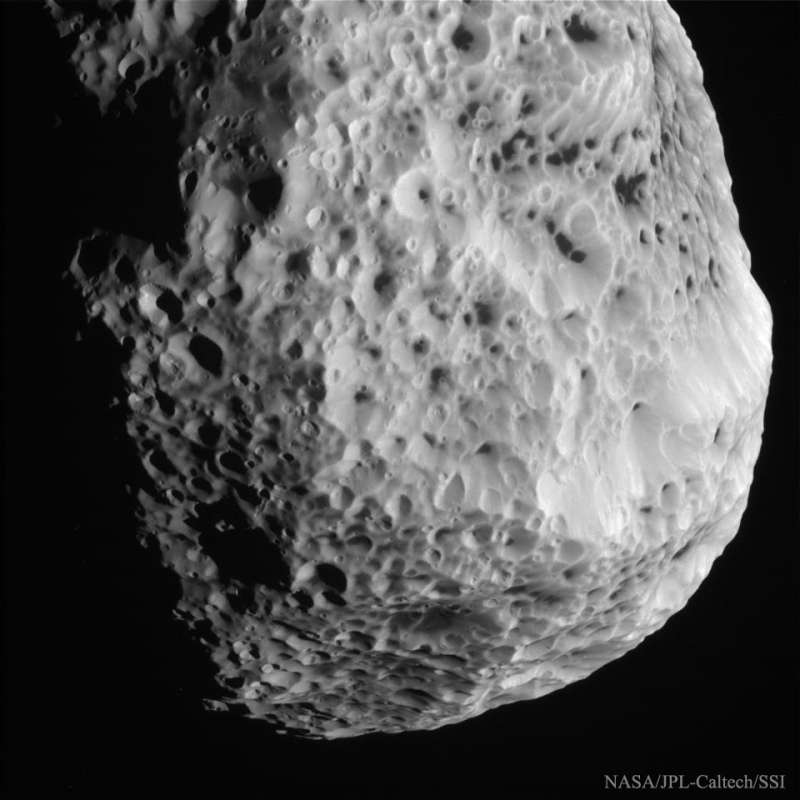Explanation: Why does this moon look like a sponge? To better investigate, NASA and ESA sent the Saturn-orbiting robotic spacecraft Cassini zooming past Saturn's moon Hyperion, once again, earlier this week. One of the images beamed back to Earth is featured above, raw and unprocessed. Visible, as expected, are many unusually shaped craters with an unusual dark material at the bottom. Although Hyperion spans about 250 kilometers, its small gravitational tug on Cassini indicates that it is mostly empty space and so has very low surface gravity. Therefore, the odd shapes of many of Hyperion's craters are thought to result from impacts that primarily compress and eject surface material -- instead of the more typical round craters that appear after a circular shock wave that explosively redistributes surface material. Cassini is on track for another flyby of Saturn's Dione in about two weeks.
Retrospective:
All Previous June 3
APODs
1999 2000 2001 2002 2003 2004 2005 2006 2007 2008 2009 2010 2011 2012 2013 2014 2015 2016 2017 2018 2019 2020 2021 2022 2023 2024 2025 |
Январь Февраль Март Апрель Май Июнь Июль Август Сентябрь Октябрь Ноябрь Декабрь |
NASA Web Site Statements, Warnings, and Disclaimers
NASA Official: Jay Norris. Specific rights apply.
A service of: LHEA at NASA / GSFC
& Michigan Tech. U.
|
Публикации с ключевыми словами:
Saturn - спутники Сатурна
Публикации со словами: Saturn - спутники Сатурна | |
См. также:
Все публикации на ту же тему >> | |
